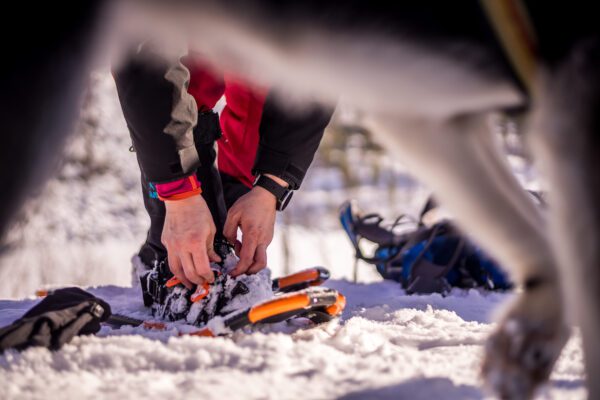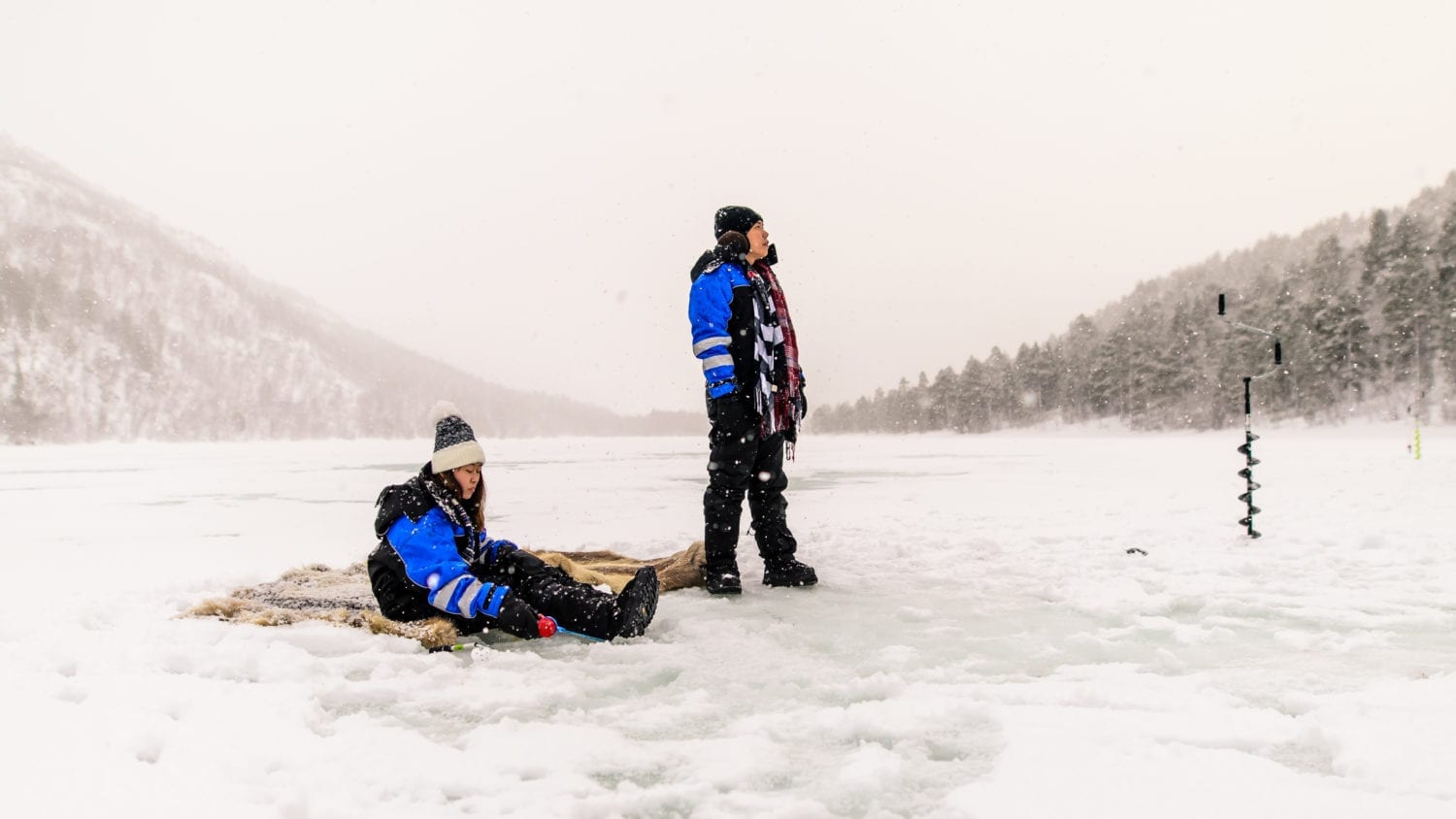We offer two different snowshoeing adventures.
Option 1: Snowshoeing, Husky, Ice fishing & Lunch (4.5 hours)
On this snowshoe trek, you get to try ice fishing for Arctic char and enjoy lunch grilled on an open fire at our wilderness camp.
The return hike on snowshoes through a pine forest to the wilderness camp is about 2.5 km. We also stop at a viewpoint and enjoy a wonderful view of the Altafjord.
Remember your camera! This is the Norwegian outdoor culture in a nutshell.
Option 2: Snowshoeing & Husky (3 hours)
On our three-hour trip, we set off from our HQ in Øvre Alta. We explore the pine forest along the banks of the Alta River and are sure to experience the tracks of wild animals, including the King of the Forest, the moose, as well as hares and foxes.
We also stop to light an open fire and serve hot drinks and snacks.
Huskies
We will be joined on both trips by one of our three Alaskan Huskies – Atlas, Bruno or Laggo. They will help pull or carry the gear as well as providing nice company.
Extra warm clothes
The use of extra clothes, warm boots, mittens and woollen hats is included on both trips.
Pick-up
Transfers to and from your hotel are included in the tour price.
The history of snowshoes
Snowshoes were first used by hunters and trappers in Central Asia more than 6,000 years ago. Naturally enough, they were reliant on obtaining food and subsistence also during winter. The hunters observed how various animals moved in the deep snow without sinking down into it and realised that they needed to use aids and learn from the animals to move through the snow.
Without the ability to move freely and quickly through the snow, our ancestors would not have had the possibility of migrating and settling in the Northern Hemisphere. Snowshoes were a necessity for people to be able to feed themselves in areas with a lot of snow during winter.
As people moved round, migrated and settled in new areas, the snowshoe in time spread to many parts of the world.
Snowshoes have a large (and varying) bearing surface. They are strapped on the feet, enabling the user to walk on the snow surface instead of breaking through with each step. Traditionally, the shape of snowshoes resembled a tennis racket, but it’s now more oval. Snowshoes were originally made of natural materials such as wood and leather but are now mostly made of plastic and aluminium.
Snowshoes or snowshoe-like equipment have been used for as long as skis to enable people to move in snow. In the past, wooden and metal snowshoes were also made for horses.
Important invention
The snowshoe is one of the first important human inventions, and many compare it to the invention of the wheel. Snowshoes were well known and much used by many people well before the wheel saw the light of day.
The snowshoe is also regarded as the precursor to the ski.





